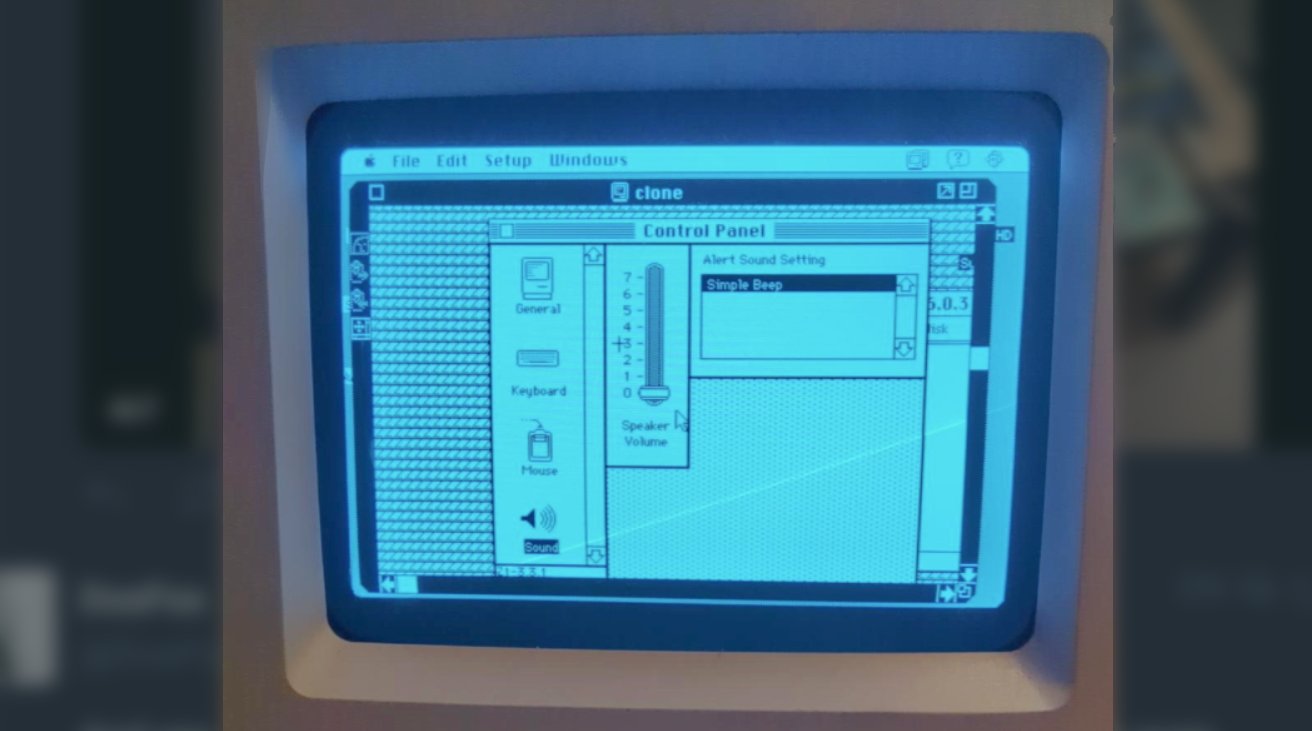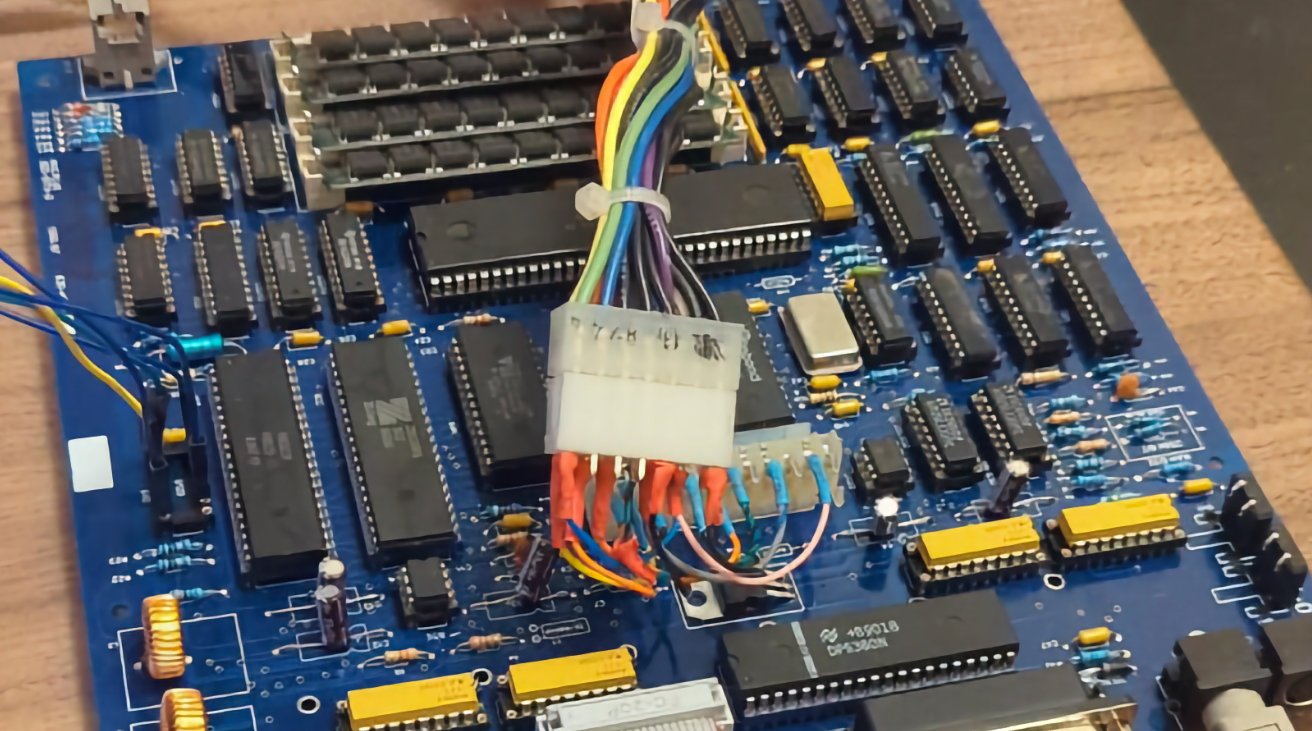An engineer has built a classic Mac Plus from modern parts
Apple sold the Mac Plus from 1986 to 1990 -- but now this early classic Mac is back with most of the parts made this century, thanks to a very dedicated fan.

That's actually a Mac Classic but the screen is showing the output from the clone Mac Plus
Usually when someone tells you that they've built their own computer, nod politely and change the subject. Invariably, it's a PC, they're a gamer, and they've ordered a few components and put them together exactly the way they were intended.
It's fiddly, and you can end up with a smoking box of now-worthless electronics if you're not careful. But, it's nothing like building a computer from individual chips and circuits.
A Mastodon user called DosFox sourced a bare motherboard, painstakingly found or recreated the ROM chips for it -- and built a working clone of a Mac Plus.
"The last Macintosh Plus (before this) was manufactured in 1990," wrote DosFox on Mastodon. "This is the first new* Macintosh Plus in 34 years! *IWM not withstanding, but I'm working on it."
IWM is the Integrated Woz Machine, designed by Apple co-founder Steve Wozniak. It was his version of a controller for a floppy disk drive, made because he couldn't afford an existing one.
That's the kind of detail DosFox had to know, and an engineering background was the kind of knowledge required to even approach the job.
As yet, DosFox has not said a great deal about the project, other than it works and that ancient Mac software Timbuktoo was needed to prove that it did. Timbuktoo is essentially a remote desktop app, and was needed since the clone Mac Plus's video out isn't working yet.
But DosFox did previously reveal the drive to do this, in another sense of the word drive. Before this, DosFox built a clone of the Apple Lisa, said at the time that the aim was really to make a Mac.
"Theoretically this project is even older than the Lisa project," wrote DosFox on Mastodon., "I only built the Lisa as I couldn't build a Macintosh!"
Following the making of that clone Apple Lisa, DosFox published detailed instructions on how it was done, and also explained more of the reason behind doing it.
"Two things really," wrote DosFox. "The first is that I have basically accumulated every single hardware iteration of compact Macintosh that Apple had produced."

A painstakingly rebuilt Mac Plus motherboard
That collection includes "a 128K Macintosh that was built in the fifth week of 1984 (one week after the Macintosh was even launched!)." And with this collection in mind, plus knowledge of the components used in all of them, there was also that DosFox "had a bit of an interest in building my own computers from scratch."
Saying that most projects tend to concentrate on hardware and so count getting the lights to work, so to speak, is enough.
"I was adamant that any computer I build must have a good software library present," continued DosFox. "Therefore I was set on building a clone of an existing computer -- a computer from Apple no less, with a full 68000 and GUI. I was set on building a Macintosh."
It's not actually clear from the Mastodon postings whether DosFox has housed the recreated computer into a Mac Plus case, as the Classic case is only similar on the outside. However, separately, it's now also possible to 3D print a classic Mac housing for yourself.
Sourcing chips, recreating hardware, and 3D printing casings. Now that's building a computer.
Read on AppleInsider

Comments
/s
Not to belittle such an endeavor which is akin to the MONster 6502 project, my only question regarding "new" parts is how did he implement the ROM? Was one even needed?
It's incredible to see how a new generation is recreating the technology of the past. It give me hope.
M68K chips are still manufactured, apparently by NXP (and maybe others). Back in 1984, I had an interview for embedded controller programming. They were using Ziliog Z80 chips, because Z80s were dirt cheap ($1-3, at the time, I think). Z80s look like they were discontinued about a month ago, but had many manufacturers at one point. Would not bet money on no one still manufacturing Z80s. In many applications, being the cheapest option is often more important than being the fastest. Digikey was apparently still using (or maybe just selling) Z80s recently.
https://arstechnica.com/gadgets/2024/04/after-48-years-zilog-is-killing-the-classic-standalone-z80-microprocessor-chip/